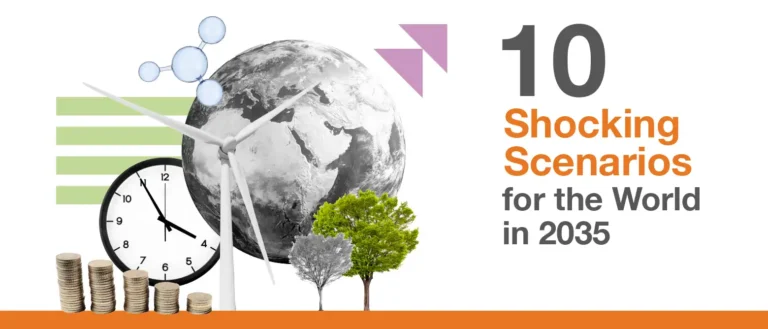On 20-21 February, over 650 loan market participants from around the world got together at the Asia Pacific Loan Market Association (APLMA)’s annual Global Loan Market Summit in Hong Kong.
Among the speakers at the summit was Scott McMunn, the CEO of the Loan Market Association (LMA). Here, the CEO of the APLMA, James Hogan, and Scott share with us on how the two regions are similar and different from each other, and how the two associations collaborate with each other.
Can you give us some context about your respective regions and some of the opportunities you see?
James: Firstly, I would say that Asia is punching below its weight relative to other metrics. Consider the GDP: the region excluding Japan now contributes about a third of global GDP, but accounts for just 14% of total syndicated lending volume in 2023. For private credit, the most generous estimate I’ve heard recently is just 7%. Having said that, private credit has certainly emerged as an alternative asset class in Asia. I think everybody appreciates its huge growth opportunity here, and is trying to understand how best they should position themselves to take advantage. The room for opportunity here, compared to some of the more mature environments, is loud and clear.
For syndicated loans, many of the practices are more manual than you would expect. A lot of the processes are not as automated as they should be. But again, that spells a huge opportunity for the APLMA to add value in standardisation, use of technology, and process improvement.
Scott: We have a lot of similarities with APAC, but the growth potential is different. In Europe, we almost have two markets: syndicated investment grade lending and leveraged finance. The end investor is different between the two, based on the yields, returns, and what the lenders get from it. With the former, you typically have the large banks, commercial and investment banking lending; while with the latter you get institutional credit. Africa and MENA are more the former, which is more of commercial bank lending, and maybe more similar to APAC.

There has been an unprecedented growth of private credit. How is the opportunity in your region? What about the regulatory environment?
Scott: This unprecedented growth in private credit is a classic example of suppliers and users of capital finding a way to connect.
We’re in the middle between the US and Asia Pacific in terms of the uses and level of maturity of private credit. What we’ve got in Europe is a broad range of private credit as an asset class, ranging from the alternative to traditional public leveraged loans, all the way through to more mezzanine loans, asset-based lending, and specialty finance.
From a regulatory perspective, regulators want to understand what risks are being exposed and to whom. There is a debate about whether the expansion of institutional investment in term loans means that they should be regulated more like securities. Regulators have also been examining other aspects of the markets as non-bank participation grows. So our role here at the LMA is to build the facts together and work intensively with regulators to protect the loan markets’ unique ability to finance businesses and economies.
James:

The additional flexibility around structuring and repayment terms that private credit provides is complementary with the Asian syndicated bank loan market.
Banks dominate lending in APAC and lending practices are often more conservative than in other regions. Even in deals involving private equity sponsors, most banks rarely go beyond 5x leverage in the Asian market. This means there is less competition between banks and credit funds compared to elsewhere, and credit funds must work with banks to originate opportunities and co-lend.
On the regulatory environment, there’s a huge desire for central banks in the region to work closely with us, whether it’s contributing to potential use cases, or sharing draft consultation with us. The APLMA is in a privileged position to potentially – and I use that word very respectfully – proactively and productively influence the shape of the regulatory environment across the region, and help avoid bringing about unintended consequences when putting out guidelines. So I think the degree of emphasis is different to Europe, but the direction of travel is very much the same.
How has sustainable lending evolved in your region?
Scott: The environment is shifting a little bit in Europe. Over the last three to five years, there was a large amount of excitement. In practice. I think we’ve seen challenges over the last two years questioning whether it’s actually doing anything. Obviously, the regulators and the press are talking about greenwashing.
So there’s definitely an element of “What is it?” and “How do you define it?” There’s a lot of challenge here for banks and borrowers, and even the sponsors, of how to do it, how to prove it, and do you actually want to do it under this banner because of the uncertainty or the expense of verifying it and assuring it.
Certainly we’re seeing sustainable lending volumes coming down, because of some of this uncertainty and definitional challenge.
James: What we’ve learned a lot from working with the LMA over the years is certainly in the area of defining sustainable lending.
Last year, the LMA and the APLMA, together with the LSTA, collaborated on the “Guide to the Application of the SLLP in Fund Finance” and “External Review Guidance for Green, Social and Sustainability-linked Loans”. These sustainability-linked loans guidelines demonstrate that there is a lot of commonalities between the two environments. Where I think there is room for even more collaboration will be around transition finance.
How does technology facilitate the loan market in your region?
Scott:

Specifically on the settlement process, we’re missing the opportunity to evangelise and look at what’s possible outside those narrow cases. Some of that might be because of the need for banks to change their existing practices: institutions are using different solutions, leading to a lack of connectivity in the process.
At the APLMA summit in February, I was so impressed by what the regulator said about their progress in digitalisation and tokenisation. The maturity of digitalisation and technology in the Asian market is a little more than what I’ve seen in EMEA.
James: Building on Scott’s point in terms of existing settlement processes, I think there’s massive opportunity for technology in providing greater transparency and clarity. Much of that is around reporting.
What is really exciting for the APLMA is the focus on new technology, for example, in blockchain technology and tokenisation, which a lot of the central banks around the region are committing resources to and are encouraging banks in their jurisdiction to similarly resource and get behind.
So I think for the industry, the lending market of today, and the lending market of tomorrow, there are massive opportunities for technology.
Coming back to your respective associations – what are your key strategic goals for 2024, and what are some of the challenges? Where do you see synergy?
Scott:

To do that we need to look at the universe of our members and non-members. We have to get the participants in the ecosystem more involved – or even to become an LMA member – and that includes institutional investors, asset allocators, and LP investors and family office who are increasingly allocating large sums of capital to the market. The challenge there is how we connect them. In addition to putting our content out there, it’s also about knocking on doors and engaging through one-to-ones and small roundtables to showcase what the LMA is doing for them.
Our second priority is to embrace tech solutions to drive further efficiency across the broader markets, not just the settlement process, to save our members time and money and reduce complexity and hence operational risk. Finally, continuing our work on sustainable finance: setting the standard about what it is and how to manage it; and to serve our members through clear, concise and strong frameworks, ensuring the right impact and measurability of financing. It’s crystal clear from the APLMA summit that the central themes of our members are totally on the same path – every session, every panel, every speaker at the summit has focused on sustainable finance, private credit and technology. Everybody is moving from the question “What is it” to “How does it impact me”. I think the LMA and the APLMA need to be working on how we set the standards in those areas.
In terms of our membership, we both have members from different markets, from developed and developing countries all considering different regulatory and legal frameworks, with different currencies, capital allocations, return parameters. With this huge amount of overlapping interests, it’s important that the two associations work together.
James: Picking up on Scott’s point –

Working closely with the market and regulators, we’ve got to be able to provide clarity about what the main issue is, and demonstrate that we can actually contribute or propose a solution. The second would be that while we are very strong in certain geographies across the Asia Pacific region, there are other geographies that we have to work on. Particularly this year, across ASEAN and India, where the knowledge and understanding of APLMA’s relevance isn’t as strong as it should be. And more fundamentally, there are plenty of gaps in the market for improvement. The third area is definitely about understanding the pain points across the region and how they can be addressed by process guidelines or technology solutions. The challenge is that, similar to the LMA, our membership is composed of a very broad church of different interests. So it requires regular dialogue to understand what are the key issues and key pain points that need to be addressed.
With regards to sustainability, we’ve been talking to the HKMA about green finance tokenisation, which is one of their three priority areas, and we want ourselves and the authority to be very aligned in that. I think there’s a lot of learning in this area that we can potentially share with the LMA and vice versa. I also think there’s a strong desire among members in Asia to learn from counterparts across Europe and North America so it was great to have Scott’s presence at our summit in February for the delegates to learn more about the LMA’s priorities.
Finally, what’s your role in supporting the future of the syndicated loan market in your region?
Scott: The role for me is, as a leader, bring our stakeholders together and ensure that the LMA maintains our authoritative voice that allows the transmission of capital to borrowers in a controlled and efficient way.
James: I echo everything that Scott has said, and at a personal level, the onus is on me to stay close to our members to better understand their challenges and opportunities, and how we can at APLMA can assist.

James Hogan was appointed as the CEO of the APLMA with effect from January 2024. Based in Hong Kong, he is a seasoned international banker and strategic adviser with more than three decades of experience in the financial services sector across nine different countries.
James held senior executive roles at HSBC across different key financial markets including Hong Kong, London, New York and Sydney. He served as Asia Pacific Regional Chief Operating Officer for HSBC’s Commercial Banking business, and was Country Head of Corporate and Commercial Banking at HSBC Australia.
James is a Member of Cyberport’s Advisory Group, the Hong Kong Government’s hub for digital technology, and also serves the business community as a Director of the Australian Chamber of Commerce in Hong Kong. James is also a member of the Steering Committee of the Asian Financial Forum, a leading international conference for the finance sector in Asia.

Scott McMunn was appointed as the CEO of the LMA with effect from September 2023. Based in London, he has held a wide range of leadership roles in finance for nearly 30 years with institutions including Abbey National, Deutsche Bank, and the Royal Bank of Scotland where he was CEO of RBS Asset Management.
His most recent roles have been as a principal in a private equity firm and as co-founder in a mortgage fintech.





